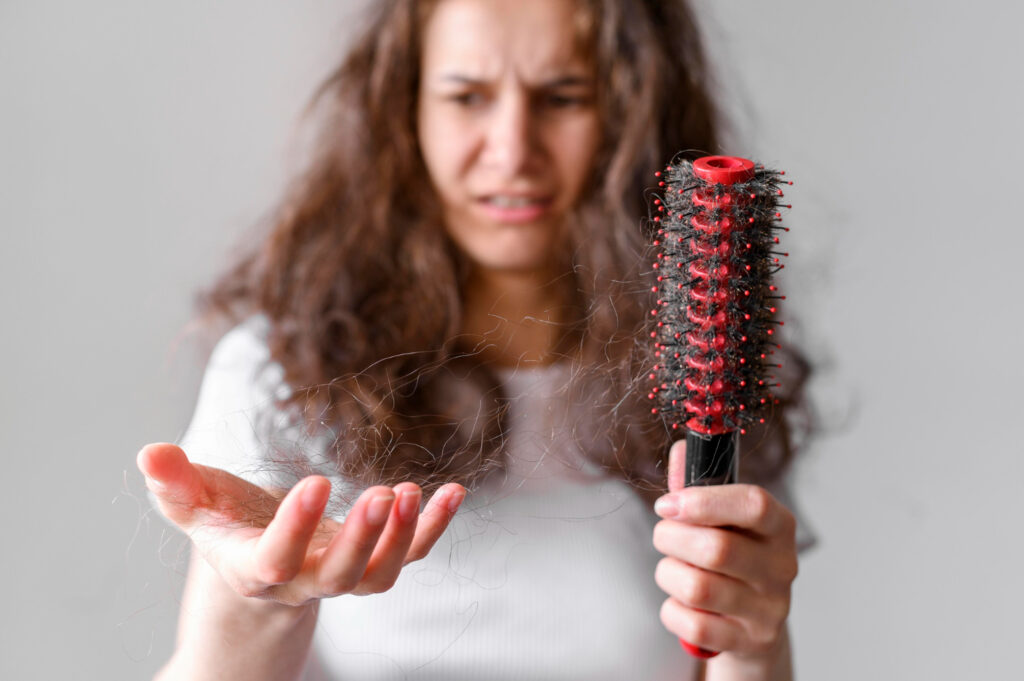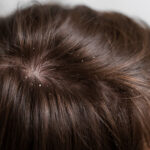
In this article
Hair loss, also known as alopecia, can impact just your scalp or your entire body. This condition can be either temporary or permanent, and it can arise from various factors such as heredity, hormonal changes, medical conditions, or the natural aging process. While hair loss can affect anyone, it is more prevalent among men.
Baldness generally refers to significant hair loss from the scalp. The most common cause of baldness is hereditary hair loss associated with aging. Some individuals choose to let their hair loss proceed without intervention, while others might opt to cover it with hairstyles, makeup, hats, or scarves. Additionally, there are treatments available that can help prevent further hair loss or promote hair regrowth.
Signs and Symptoms of Hair Loss
Hair loss can manifest in numerous ways, depending on the underlying cause. It can develop suddenly or gradually and might affect only the scalp or the entire body. Common signs and symptoms include:
- Gradual Thinning on Top of the Head: This is the most common form of hair loss, particularly as people age. Men typically experience a receding hairline, while women may notice a broadening part in their hair. Older women might also experience frontal fibrosing alopecia, which is characterized by a receding hairline.
- Circular or Patchy Bald Spots: Some people develop bald spots on the scalp, beard, or eyebrows. These areas might be itchy or painful before the hair falls out.
- Sudden Hair Loosening: Physical or emotional shocks can cause hair to loosen, leading to handfuls of hair coming out during combing or washing. This type of hair loss usually results in overall thinning and is often temporary.
- Full-Body Hair Loss: Certain medical treatments, such as chemotherapy, can cause hair loss all over the body. Generally, the hair regrows after the treatment ends.
- Patches of Scaling on the Scalp: This can be a sign of ringworm, which may also cause broken hair, redness, swelling, and sometimes oozing.
When to See a Doctor
Consult a doctor if you are distressed by persistent hair loss and want to pursue treatment. For women experiencing frontal fibrosing alopecia, early treatment is crucial to prevent significant permanent baldness. Additionally, if you or your child notice sudden or patchy hair loss or excessive hair loss during combing or washing, seek medical advice. Sudden hair loss might indicate an underlying medical condition that requires treatment.
Causes of Hair Loss
People typically shed 50 to 100 hairs daily, which usually goes unnoticed as new hair grows simultaneously. Hair loss occurs when new hair doesn’t replace the hair that has fallen out. This can be due to various factors:
- Family History (Heredity): The most common cause of hair loss is a hereditary condition called androgenic alopecia, which is age-related. It manifests as male-pattern baldness in men and female-pattern baldness in women, leading to predictable patterns of hair loss.
- Hormonal Changes and Medical Conditions: Hormonal changes from pregnancy, childbirth, menopause, and thyroid issues can cause hair loss. Medical conditions such as alopecia areata (an immune system disorder), scalp infections like ringworm, and trichotillomania (a hair-pulling disorder) are also culprits.
- Medications and Supplements: Hair loss can be a side effect of drugs used for cancer, arthritis, depression, heart problems, gout, and high blood pressure.
- Radiation Therapy: Hair might not grow back the same after radiation therapy to the head.
- Stressful Events: A significant physical or emotional shock can lead to temporary hair thinning.
- Hairstyles and Treatments: Excessive styling or tight hairstyles (e.g., pigtails or cornrows) can cause traction alopecia. Hot-oil treatments and permanents can also result in hair loss, potentially leading to permanent hair loss if scarring occurs.
Risk Factors
Several factors can increase the risk of hair loss:
- Family history of balding
- Aging
- Significant weight loss
- Certain medical conditions (e.g., diabetes, lupus)
- Stress
- Poor nutrition
Prevention Tips
Most hair loss due to genetics is not preventable. However, the following tips might help avoid preventable types of hair loss:
- Handle your hair gently. Use a detangler and avoid tugging, especially when wet. A wide-toothed comb can help minimize hair pulling.
- Avoid harsh treatments such as hot rollers, curling irons, hot-oil treatments, and permanents. Limit the use of styles that pull on the hair, like rubber bands, barrettes, and braids.
- Discuss with your doctor any medications or supplements you take that might cause hair loss.
- Protect your hair from sunlight and other UV light sources.
- Stop smoking, as studies indicate a link between smoking and baldness in men.
- If undergoing chemotherapy, ask your doctor about using a cooling cap to reduce hair loss during treatment.
Summary
Hair loss can be distressing, but understanding the causes and treatment options can help manage the condition effectively. Consult with healthcare professionals for personalized advice and treatment plans tailored to your specific situation. Staying informed and proactive about hair care can significantly impact overall hair health and quality of life
FAQS
What is the most common cause of hair loss?
Hereditary conditions like androgenic alopecia, known as male-pattern or female-pattern baldness.
Can stress cause hair loss?
Yes significant physical or emotional stress can lead to temporary hair thinning.
Are there treatments for hair loss?
Yes, treatments range from medications to surgical options like hair transplants.
Can hair loss be prevented?
While genetic hair loss can’t be prevented, other types can be minimized with gentle hair care and avoiding harsh treatments.











